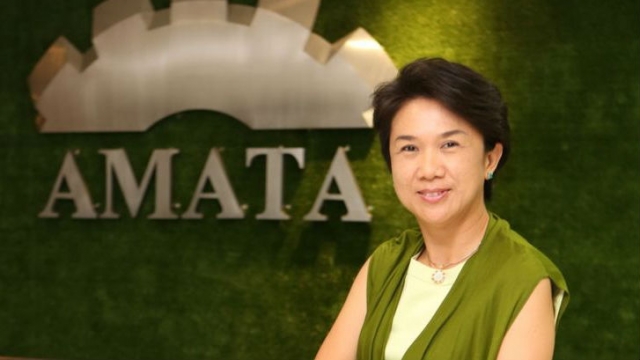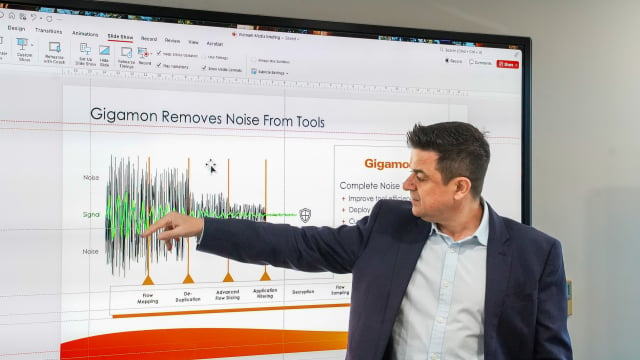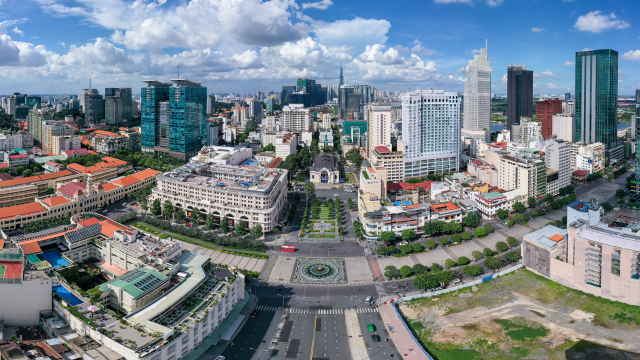Leader Talk
Amata CEO reveals details about $1.6 billion smart city in Quang Ninh province
According to the leader of Amata Vietnam, the smart city project located in Ha Long city, Quang Ninh province has the total land area of 5,789ha with the investment capital of $1.6 billion divided into two stages.

Amata Vietnam CEO Somahatai Panichewa further said that it is still planned; however, its implementation will be decided based on the expense.
More than 23 years ago, Thailand-based Amata put its first step on the land of Vietnam with the 700ha industrial park project in Bien Hoa, Dong Nai province. This is also Amata’s first project in a foreign country.
The project in Bien Hoa attracted 164 investors coming from 21 countries and territories in the world with the total investment capital of more than $2.66 billion, creating jobs for about 49,000 people.
However, as the remaining area of land was limited while the development demand was high, Amata got a certificate to develop a 1,270ha project which is the combination between a high-tech industrial park and a township in Long Thanh, Dong Nai province.
Following the success of these two projects, Amata said that it is conducting the final steps to start implementing its third project in Quang Yen, Quang Ninh province which is located in the north of Vietnam.
Sharing with TheLEADER, Amata Vietnam CEO Somahatai Panichewa said that the project in Quang Ninh has the total land area of 5,789ha with the investment capital of $1.6 billion divided into two stages.
In the first stage, about 700ha of land in Quang Yen province would be utilized for the $150 million industrial park.
$1.45 billion would be poured into the second stage to develop a smart city with a series of projects related to such fields as energy, community, environment, education, etc.
Why do you choose Quang Ninh instead of Hanoi as your next destination?
Somahatai Panichewa: We are seeking for large provinces that can greatly attract foreign investments. Developing a big project in Hanoi or adjacent to Hanoi is impossible; therefore, Quang Ninh is a potential destination for us to get a large area of land.
Choosing Quang Ninh, we based on three main factors. Firstly, Quang Ninh has the same border with Hai Phong, which is strongly developing in terms of infrastructure.
Japan has invested in the Lach Huyen deep seaport in Hai Phong; Cat Bi airport has been developed into the international airport having straight flights to Bangkok. The highway connecting Hanoi, Hai Phong and Ha Long would also connect the traffic infrastructure in the northeast of Vietnam.
Also, Quang Ninh has the same border with China. It is impossible that there would be a move among Chinese investors to the area having the lower cost of production and Quang Ninh would be one of their top priorities.
China would be a potential consumer market for material supply for production from the north of Vietnam.
Currently, China is promoting the manufacture of high-tech products while our project in Quang Ninh would focus on developing a high-tech industrial park, attracting investment in such areas as information technology, biological technology, high-tech projects, etc.
After the land use plan of Quang Ninh was approved by the Government, we have completed our procedures to ask for investment permission.
What are the differences between the projects in Quang Ninh and Dong Nai provinces?
Somahatai Panichewa: Projects in Dong Nai is very close to Ho Chi Minh City; moreover, there would be the Long Thanh international airport in the area, which differentiates the projects in the two regions of Vietnam.
The products of the industrial parks in Dong Nai province would be high-tech and less labor intensive. Whereas, the project in Quang Ninh having a very large area of land would be developed step by step. In the beginning, there would be normal products then we would gradually add more industrial values.
The implementation of the smart city in Long Thanh was easier than Quang Ninh. Having said that, it does not mean that it is impossible to conduct the latter. We expect that within next 3 – 5 years, the production of the smart city in Quang Ninh would be commenced.
However, everything is still planned. If the implementation of the next smart city in the north costs too much, we would not conduct as that is not a smart way to attract foreign investors.
Why did Amata decide to invest in smart cities?
Somahatai Panichewa: If we still did the same way as before, the projects could not survive permanently and develop sustainably. Therefore, we planned to establish smart cities to support the industrial parks.
A smart city would consist of 10 smart projects. If it is possible, we may not apply these models into Amata smart city in Ha Long at the beginning. Instead, we would step by step construct these models based on the demand and response of the market.
Developing an industrial park does not mean to serve the production only. We notice that investors coming to an area do not only need land to build factories but also develop infrastructure, services, commercial and residential purposes in order to meet the demand of different levels ranging from manager to white-color workers and blue-color workers.
Therefore, if we still develop the industrial parks for production only, we can not meet these people’s demand. That is the reason why Amata is calling on partners and joint-ventures to comprehensively develop services, creating long-term and sustainable income for them in our projects.
Besides, with new Amata projects with sufficient services, our customer would not have to seek this services outside.
How can this project benefit Quang Ninh?
Somahatai Panichewa: Industrial parks play important role in the socio-economic development of Quang Ninh province in particular and Vietnam in general.
Firstly, the project is expected to bring about $5 billion per year in revenue and 300,000 jobs for both local people and those coming from other provinces of Vietnam. The tax from this project would also contribute significantly to the socio-economic development of the locality.
People in Quang Ninh would also enjoy such services as education and recreation in their working place.
I believe that this would motivate Quang Ninh a lot in attracting more foreign direct investment (FDI) alongside its strength as a tourist destination.
Quang Ninh has been ranked the first in the Provincial Competitiveness Index (PCI) 2017, what do you think about this result?
Somahatai Panichewa: I am really happy and congratulate Quang Ninh authorities and people. I have to accept that we had the right decision to choose Quang Ninh as our next destination. Actually, we started planning for this project in 2014.
Quang Ninh has so far successfully attracted foreign investment, which is reflected clearly in the PCI 2017.
The most important thing is that the province understands and learns in what fields foreign investors want to invest and what support that they need from the government.
These are the factors making Quang Ninh become more professional in the eyes of investors and I do believe that Quang Ninh would gain significant support from FDI enterprises.Amata Vietnam CEO: "Super first" priority given to investors as the largest ever IP looms to develop
Vietnam turns semiconductor vision into action
The global semiconductor industry is being reshaped by geopolitical tensions, shifting supply chains, and the surge of digital technologies.
Cutting red tape in APA approvals to speed up tax negotiations
The change in APA approval authority is expected to shorten processing time and enhance business proactiveness in international tax negotiations.
Enterprise cybersecurity is under threat from the inside
As hybrid cloud systems grow more complex, Vietnamese enterprises are struggling to detect cybersecurity threats moving laterally within their own networks.
Breakthrough for the international financial center ambition
The submission of the draft resolution on Vietnam’s international financial center to the National Assembly heralds a new developmental era for the country.
How leadership philosophy redefines hospitality in Nha Trang
More than just running a 5-star resort, Kristian Petersen is redefining the art of hospitality with a humane and sustainable leadership philosophy.
When organic becomes an inspiring wellbeing lifestyle
For Tyna Huynh, co-founder of Drinkizz, organic is not just a food choice but a way of life that fosters a deep connection between people, nature and community.











































